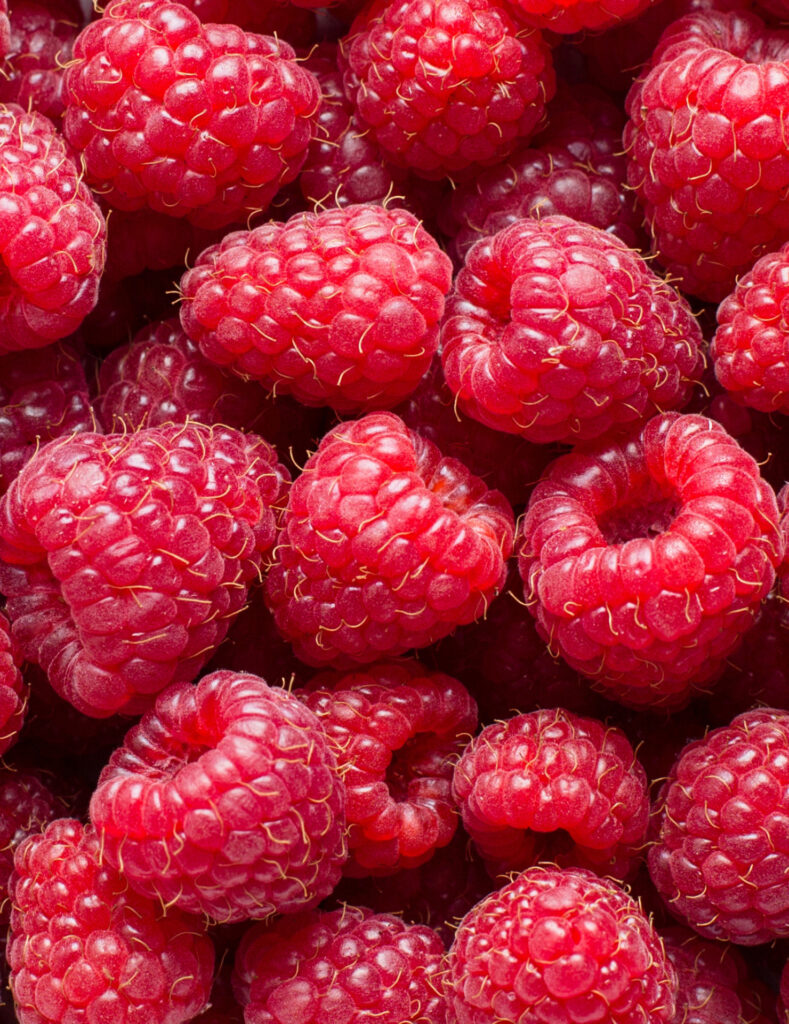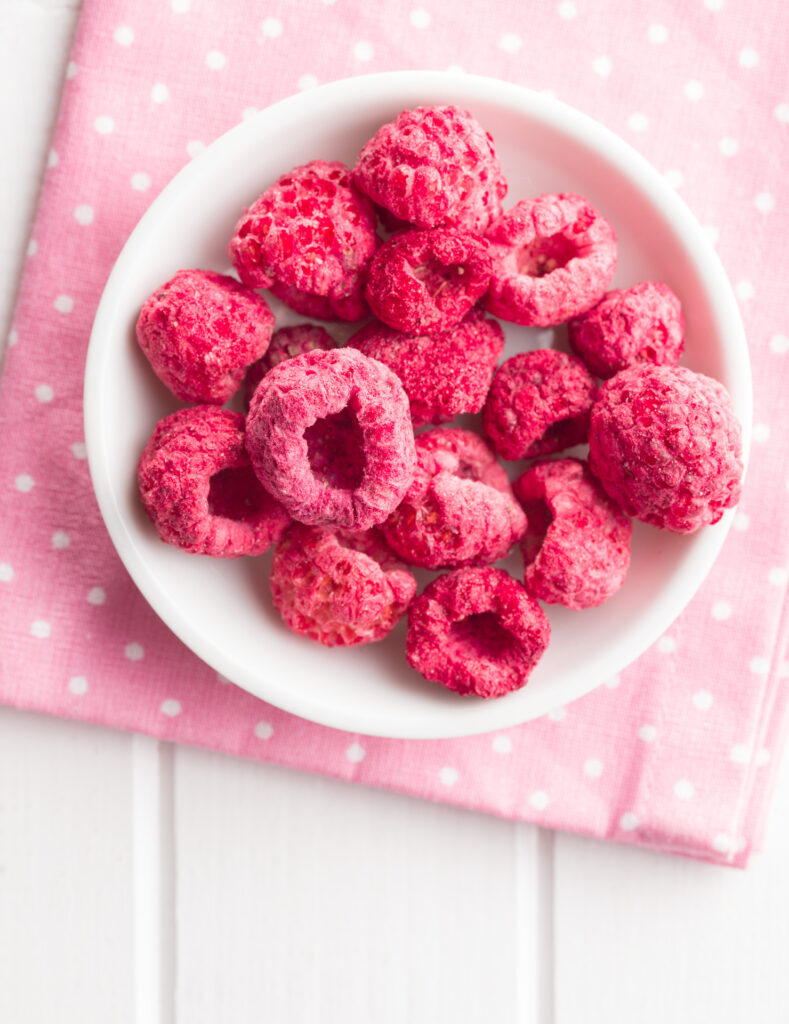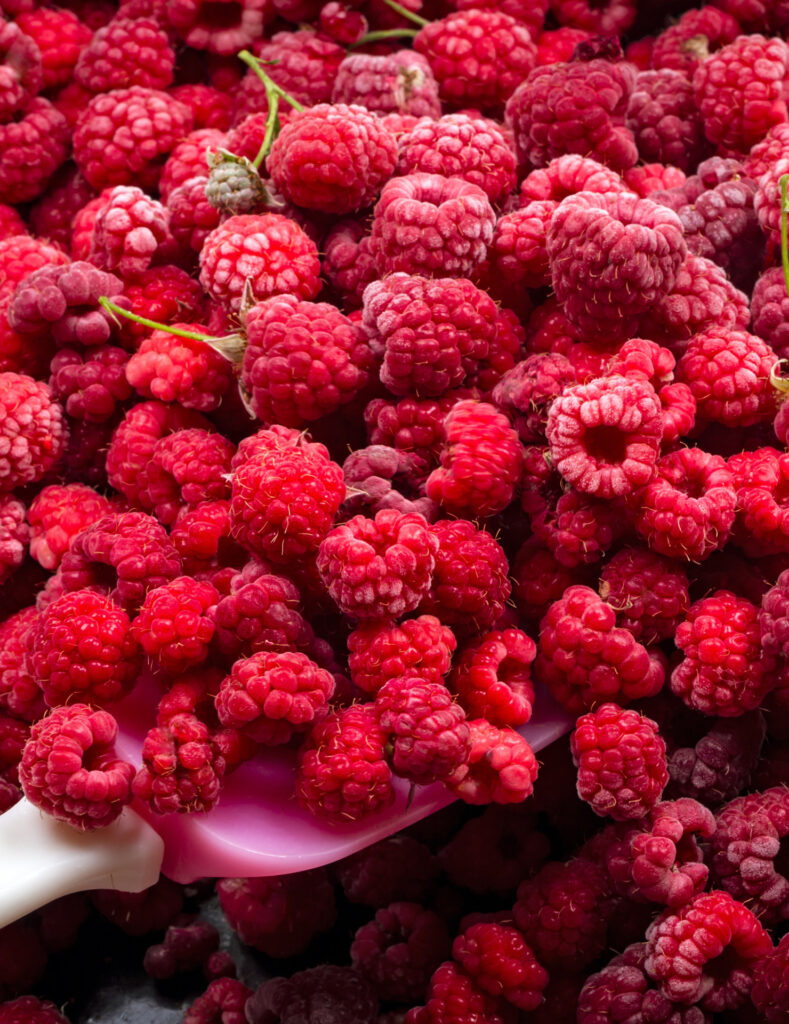Freezing raspberries is a simple and effective way to preserve their fresh flavor and extend their shelf life. Whether you have an abundant harvest from your garden or want to take advantage of seasonal sales, freezing raspberries allows you to enjoy this delicious fruit year-round.

With just a few easy steps, you can ensure your frozen raspberries retain their taste and nutritional value. In this article, we will guide you through the process of freezing raspberries, providing helpful tips to ensure success and a delightful berry experience in the months to come. So, let’s delve into the art of freezing raspberries and savor their sweetness beyond the harvest season.
Benefits of freezing raspberries
Freezing raspberries offers many benefits, making it a valuable preservation method for this delectable fruit. First and foremost, freezing allows you to extend the shelf life of raspberries significantly. By halting the enzymatic processes that lead to spoilage, freezing effectively maintains the fruit’s freshness, flavor, and nutritional content for months to come.
Moreover, freezing raspberries is incredibly convenient and versatile. Once frozen, raspberries can be easily incorporated into various recipes, from smoothies and desserts to jams and sauces. The frozen berries also provide a refreshing addition to drinks, acting as delightful ice cubes without diluting the beverage.
Freezing allows you to enjoy the taste of raspberries even when they are out of season or not readily available. It ensures that you have access to this antioxidant-rich and vitamin-packed fruit all year round, promoting a healthy and balanced diet. Furthermore, by freezing your own raspberries, you can avoid additives and preservatives commonly found in store-bought frozen fruit.

Additionally, freezing raspberries at their peak ripeness preserves their natural sweetness, tartness, and vibrant color. Unlike other preservation methods that might alter the taste or texture of the fruit, freezing maintains the authentic raspberry experience, making them an excellent addition to various dishes.
Last but not least, freezing raspberries can be a cost-effective solution. Buying raspberries in bulk during their peak season and freezing them for later use can save you money compared to purchasing them when they are less abundant and more expensive.
How do you prepare raspberries for freezing? Step-By-Step Instructions
Preparing raspberries for freezing is a straightforward process that ensures they retain their freshness and flavor. Follow these steps to freeze raspberries properly:
- Select fresh and ripe raspberries: Choose plump, firm, and fully ripe raspberries. Avoid using overripe or mushy berries, as they might not freeze well.
- Sort and clean the raspberries: Gently sort through the raspberries to remove any damaged or spoiled ones. Rinse them under cool running water in a colander to remove any dirt, debris, or lingering insects. Be gentle during the rinsing process to avoid damaging the delicate berries.
- Dry the raspberries: Pat the raspberries dry with paper towels or use a salad spinner to remove excess water. Moisture on the berries can cause ice crystals to form during freezing, affecting their texture and quality.
- Optional sugar coating (for added sweetness): If you prefer sweeter raspberries, you can lightly coat them with granulated sugar. Toss the dry raspberries in a bowl with a thin layer of sugar until they are evenly coated. The sugar will help preserve their flavor and texture during freezing.
- Arrange the raspberries on a baking sheet: Arrange the dry or sugar-coated raspberries in a single layer on a baking sheet lined with parchment paper. This prevents the berries from sticking together during freezing, making it easier to portion them later.
- Flash-freeze the raspberries: Place the baking sheet with the raspberries in the freezer. Allow them to freeze for about 1 to 2 hours or until they are solidly frozen. This process, known as flash-freezing, prevents the berries from clumping together and ensures individual freezing.
- Transfer to freezer-safe containers or bags: Once the raspberries are fully frozen, transfer them to airtight freezer-safe containers or resealable freezer bags. Remove any excess air from the bags before sealing to prevent freezer burn.
- Label and date the containers: Don’t forget to label the containers or bags with the contents and the freezing date. This helps you keep track of their freshness and ensures you use the oldest raspberries first.
- Store in the freezer: Place the sealed containers or bags in the freezer, and store them at a constant temperature of 0°F (-18°C) or lower. Properly frozen raspberries can last for up to 10-12 months.
Now you have a batch of delicious frozen raspberries ready to be enjoyed in smoothies, desserts, jams, or any recipe you choose, even when raspberries are out of season!

Do you have to rinse raspberries before freezing?
Yes, it is essential to rinse raspberries before freezing them. Rinsing the raspberries before freezing serves two main purposes. Firstly, it helps remove any dirt, debris, or pesticides that might be present on the surface of the berries. Properly cleaning the raspberries ensures that you freeze them with minimal contaminants, promoting a safer and healthier end product.
Secondly, rinsing the raspberries can help remove any potential pests or eggs that might be hidden among the berries. Insects, such as tiny fruit flies or other pests, can be present on fresh produce, and freezing them without cleaning could lead to unwanted surprises later.
However, handling the raspberries with care during rinsing is essential, as they are delicate fruits and can easily get damaged. Use a gentle stream of cool running water or a gentle spray setting to rinse the raspberries in a colander. Avoid soaking the berries or using hot water, as this can cause them to become mushy or lose some of their vibrant colors.
After rinsing in cold water, pat the raspberries dry with a clean kitchen towel or a paper towel, or use a salad spinner to remove excess water. This step is crucial because moisture on the berries can form ice crystals during freezing, potentially affecting their texture and quality.
By taking the time to rinse and dry the raspberries before freezing, you ensure that they retain their freshness, taste, and nutritional value, making them a delightful addition to your recipes even after months of freezing.
Do raspberries get mushy when frozen?
Yes, raspberries can become mushy when frozen if not handled properly. Their delicate structure and high water content make them susceptible to changes in texture during the freezing and thawing process. However, following the right freezing techniques can minimize the risk of them turning mushy.
To prevent raspberries from becoming mushy when frozen, consider the following tips:
- Use ripe and fresh raspberries: Select raspberries that are fully ripe and free from any signs of spoilage. Overripe or damaged berries are more likely to become mushy during freezing.
- Be gentle during rinsing and drying: Handle the raspberries carefully when rinsing them under cool running water. Avoid soaking them, as excessive water can lead to mushiness. Pat them dry gently with paper towels or use a salad spinner to remove excess water.
- Flash-freeze the raspberries: Arrange the dry or sugar-coated raspberries in a single layer on a baking sheet before placing them in the freezer. Flash-freeze them for about 1 to 2 hours. This process helps freeze the berries individually, preventing them from sticking together and forming a mushy mass.
- Use proper storage containers: Transfer the fully frozen raspberries to airtight freezer-safe containers or resealable freezer bags. Make sure to remove any excess air from the bags before sealing to prevent freezer burn.
- Avoid thawing and refreezing: Repeated thawing and refreezing can cause texture loss and raspberries to become mushy. Once you’ve thawed the raspberries, it’s best to use them immediately in your recipes rather than refreezing them.
While freezing raspberries may cause some slight changes in texture, following these steps can help maintain their overall quality and minimize the risk of them becoming mushy. Properly frozen raspberries can still be a delightful addition to your favorite dishes and retain much of their original flavor and nutritional value.

Can you freeze raspberries in a Ziploc bag?
You can freeze raspberries in a Ziploc bag or any other resealable freezer-safe bag. Freezing raspberries in a Ziploc bag is a convenient and practical way to preserve these delicious fruits. To do so, ensure that the raspberries are dry and properly prepped before transferring them to the bag.
Arrange the raspberries in a single layer inside the Ziploc bag, removing any excess air to prevent freezer burn. It’s advisable to freeze the berries in smaller portions or flat layers to make it easier to use only the desired amount later. Label the bag with the contents and date of freezing for easy identification.
Using Ziploc bags for freezing raspberries saves space in the freezer and makes it simple to access just the right amount of berries for your recipes. Moreover, these bags provide an airtight seal, minimizing the risk of freezer burn and preserving the raspberries’ taste and nutritional value.
Remember to handle the raspberries gently to avoid any unnecessary damage to the delicate berries. When stored properly in the freezer at a constant temperature of 0°F (-18°C) or lower, frozen raspberries in Ziploc bags can last for several months, allowing you to enjoy their vibrant flavor and nutrients all year round.
What is the best way to defrost raspberries?
An easy way to defrost raspberries is to do it slowly in the refrigerator. This method helps retain their shape, texture, and flavor while preventing them from becoming mushy. Avoid using your kitchen counter or a silpat mat. It will take a couple of hours, but it is so worth it.
Here are step-by-step instructions:
- Transfer the raspberries: Take them out of the freezer and place them in a shallow container or a bowl. Ensure to cover the container to prevent cross-contamination or absorption of odors from other foods in the refrigerator.
- Refrigerate overnight: Allow the raspberries to defrost slowly by placing the container in the refrigerator overnight. Depending on the quantity of raspberries, this process might take around 8 to 12 hours.
- Avoid rushing: Do not rush the defrosting process by using hot water or microwaving the raspberries. Rapid thawing can lead to uneven defrosting, making the berries mushy or losing flavor.
- Use thawed raspberries promptly: Once they are fully defrosted, use them in your desired recipes. If you have more than you need, you can refreeze the unused portion but remember that multiple thawing and refreezing can affect the texture of the berries.
It’s essential to note that defrosted raspberries may have a slightly softer texture than fresh ones. They might be best suited for recipes whose shape and texture won’t significantly impact the outcome, such as smoothies, sauces, or baked goods.
What can you make with frozen raspberries?
There are so many different recipes you can make with these summer fruits. The next time you head to a u-pick farm, think about which recipe you’d like to try first:
- raspberry coffee cake
- raspberry sauce
- raspberry quick bread
- raspberry ice cream
- Inside The Kitchen: Raspberry Sauce
- Raspberry Swirl Rolls Recipe
- Inside The Kitchen: Raspberry Lemon Whoopie Pies
- Raspberry Rhubarb Sorbet Recipe
There’s nothing like enjoying fresh fruit – fresh berries specifically. However, sometimes you KNOW that you can’t get to all your fruit in time. The next time you find yourself in the middle of raspberry season without enough time to make raspberry muffins, grab your largest baking tray and freezer-safe bags, and free what you have on hand!
